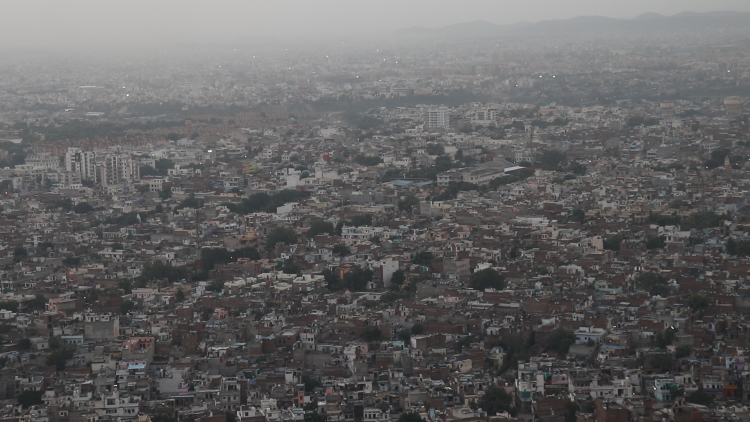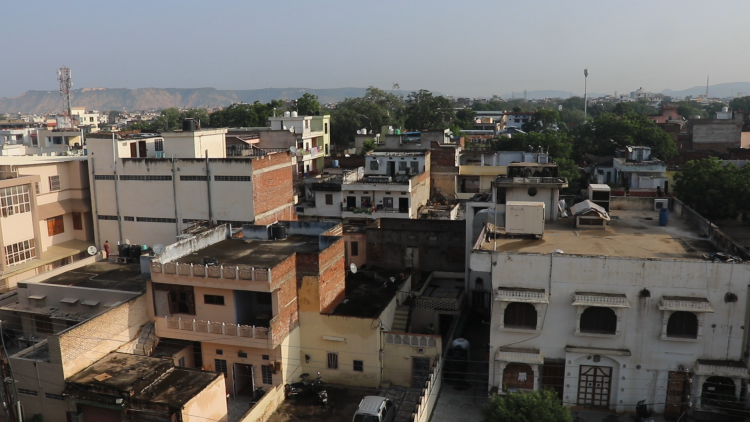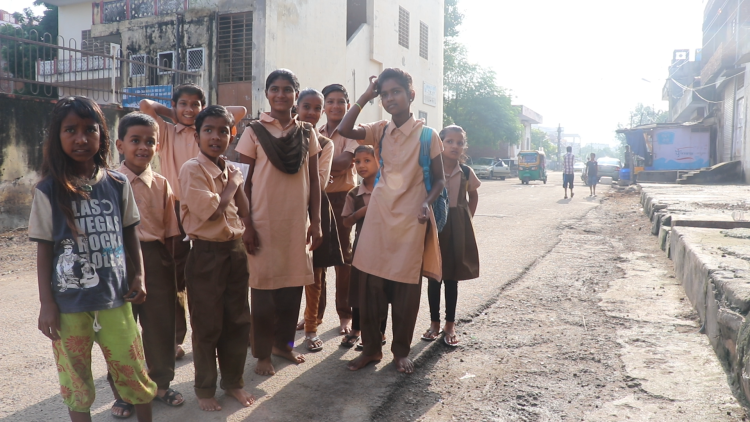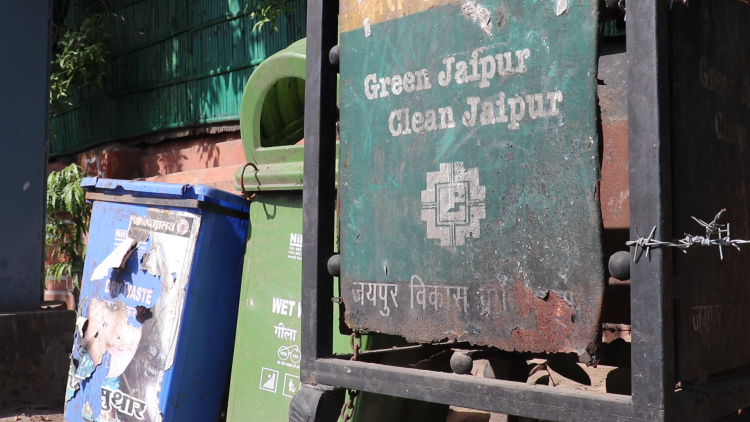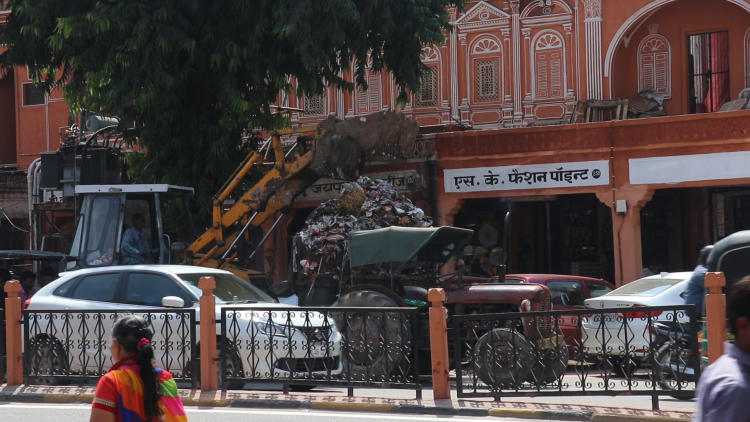A Complex Crisis
India’s garbage crisis is much more involved than people simply putting their rubbish in the bin
By Phoebe Nixon
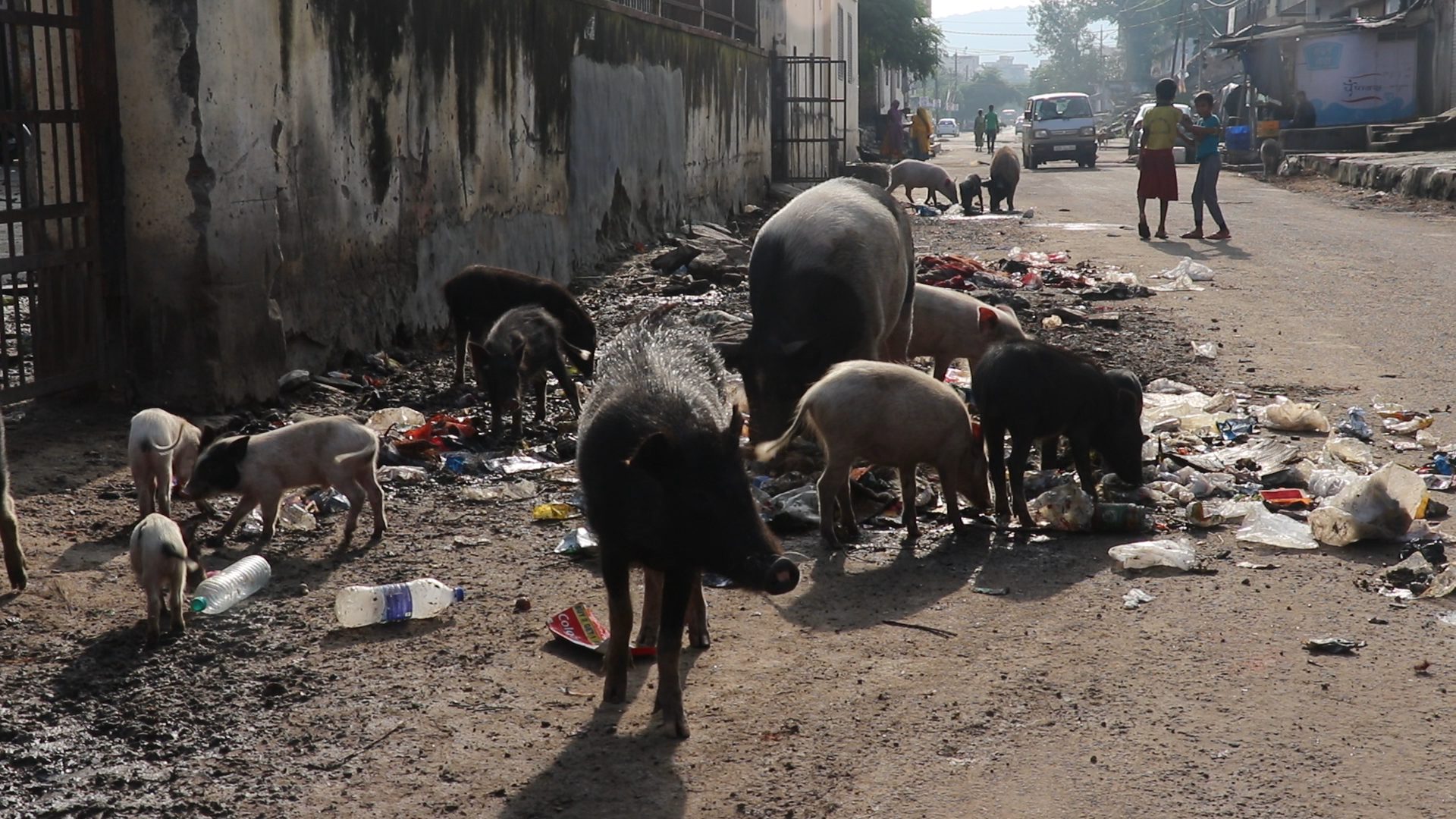
In the early light of dawn, while most of India is still asleep, women in vibrant saris and men with pushcarts take to the streets. These are the waste workers of India.
For 35 years, Lavanya has been rising early to clean the streets of Jaipur. Self-employed, she collects the garbage from 10 apartment complexes per day and dumps it in the garbage trucks that come around each morning.
In between complexes, she sweeps rubbish on the street into piles.
These piles will then be collected by a male waste worker who comes around with his pushcart, uses a dustpan to sweep up the pile and deposits it into a bin on his cart.
Then there are the rag pickers.
“These people pick up… recyclable objects from the garbage dumps they visit and they bring them back to particular sites where it’s actually recycled,” says Dr Manu Sobti, a senior lecturer with the University of Queensland’s School of Architecture researching Indian urbanization, with an interest in waste management.
Many rag pickers are from displaced populations and they have very few options to earn their living any other way.
“A lot of them are part of these larger groups run by henchmen and the mafia… who actually compel them to work in that particular way,” says Dr Sobti.
These workers make up the traditional system of garbage collection in India, which is mostly an informal sector, and they encapsulate many of the social complexities facing India’s garbage crisis.
India’s caste system, a 3 000 year old way of determining social stratification, has a role to play in India’s social and cultural attitudes towards garbage.
According to the caste system, there are four primary castes. The caste you were born into traditionally dictated the type of job you’d have, as well as your hierarchical ranking in society.
Brahmins worked as priests, Kshatriyas were princes and warriors, Vaishyas were artisans and farmers and Shudras were farm hands and servants.
Dalits, or ‘untouchables’, were the lowest members of Hindu society and were considered to be born below the fourth caste.
“[The caste system] actually systematically defined a particular caste who would pick up garbage and that was the lowest caste in Indian society called the untouchables,” says Dr Sobti.
“These people were completely removed from the cycles of everyday life because they were considered to be doing undesirable chores,” he says.
These chores were considered spiritually contaminating to their souls and it was believed people of higher castes would become tainted through interactions with Dalits.
It was believed people were born as untouchables as punishment for bad behaviour in a previous life and, through good behaviour and following strict social rules, they could rise to a higher caste in the next life.
“This belief [that people from the lowest caste are responsible for rubbish collection] has unfortunately still continued even ‘til today,” says Dr Sobti. “It is a really problematic issue... and was one of the issues Gandhi was fighting against.”
Dr Aparna Hebbani, a lecturer at the University of Queensland’s School of Communication and Arts, researching intercultural communication, explains that this idea continues through the belief that rubbish isn’t something you touch in India.
“You don’t pick up rubbish. That’s considered a low thing to do, an unhygienic thing to do,” she says.
While living in India, Dr Hebbani said people were appalled when she would pick up her dog’s poo.
“They said ‘No you can’t touch that!’ and I said, ‘I’m not touching it, the plastic bag that’s turned inside out is touching the poop. I’m not,’ says Dr Hebbani.
“But they said ‘Oh no, you don’t pick up dog poop!’ and I said ‘Who’s going to pick up my dog’s poop? Is anyone else going to pick it up? No. So imagine if I never picked up my dog’s poop over two years – how much poo would there be on the road?’”
“I don’t think it really kicks in that garbage isn’t going anywhere,” she says.
But these social elements are only one aspect of a multifaceted problem.
“It’s a matter of scale,” continues Dr Hebbani.
With a population of 1.3 billion, India is the second largest country in the world, behind China.
In comparison, Australia’s population of 24 million is just under 2% of India’s. This is despite India being on a land mass almost 2.5 times smaller than Australia.
“How do you provide bins to 1.3 billion people? How do you organise pickup for 1.3 billion people?,” says Dr Hebbani.
“There aren’t enough garbage pickers, there aren’t enough garbage trucks to pick up garbage, there aren’t trash cans at every corner [to meet the needs of the population],” she says.
Adding to that – India is the world’s fastest growing major economy, according to the World Bank. Their $2 trillion economy has an average GDP growth rate of 7.73% compared to Australia’s 3.4%.
These two factors mean India is a sprawling nation, bursting at the seams.
What has really accelerated India’s garbage crisis, says Dr Hebbani, was the Indian economy opening up to private and global companies in 1991.
Globalisation, which essentially means countries become more interconnected through channels such as technology and the economy, increased throughout India after becoming a free market.
The prosperity India experienced due to globalisation then led to urbanization, which describes increasing urban population due to migration from rural areas.
“India is changing as we speak. It is not the same India I grew up in,”says Dr Sobti.
“Indian cities are experiencing rapid population growth as people come to the city to get a job,” he says.
Dr Era Upadhay, a lecturer in Environmental Science at Jaipur’s Amity University, says this process has led to the formation of megacities across India.
“Megacities such as Delhi, Mumbi, Chennai, Bangalore and Kolkata have dynamic economic growth and high waste generation,” she says.
Dr Upadhay says megacities such as Hyderabad produce 7.7 million tonnes of garbage per year.
According to Dr Sobti, on average each Indian produces 110kg of garbage each year.
However, for a city such has Hyderabad with a population of 6.8 million people, that is more tonnes of garbage generated each year than citizens in the city.
Dr Vivek Agrawal, Trustee of the Centre for Development Communication, says that as any country moves towards prosperity, their consumption is going to increase.
However, this rise in consumption has resulted in a hasty move away from the traditional Indian lifestyle, says Dr Agrawal.
“India traditionally is a less waste producing country because… there was not much waste generated at a domestic level [as] we had a habit to consume fresh food,” he says. “But we are adapting to the Western lifestyle. Packaged food… has contributed a lot towards waste generation because [it comes with] a lot of packing material.”
This change in the average Indian diet has increased the amount of waste the country is generating, says Dr Hebbani.
“Food has a lot to do with it – a lot of the garbage comes from food. And when you have to feed 1.3 billion people, that’s a lot of food and that’s a lot of plastic,” she says. “Fast food culture… has seeped into the country and because folks’ incomes have increased, it’s more affordable now.”
“Biscuit packets, plastic cups, paper plates, plastic carry bags have really crept through so you get plastic in the tiniest village in the tiniest shack. You’ll find sachets selling shampoo and coconut oil and chips and biscuits which was not the fact even 20 years ago,” says Dr Hebbani.
This large amount of plastic is leading to disastrous flow on effects across India.
Dr Upadhay says litter can be a huge problem in a country like India which is known for its intense monsoon season.
“Waste, especially plastic bags, clog up the drainage systems. Then a flood comes and, because of this waste, the damage is much worse and has caused many people to die,” she says.
Dr Hebbani says these devasting effects of India’s garbage crisis have led to “…a real movement to keep India clean.”
Dr Manishita Das Mukherji, an Associate Professor at Amity University’s Institute of Biotechnology specializing in environmental science and the management of waste, says that until the year 2000, India did not have a formal system of garbage management.
Instead, waste was handled exclusively by the informal sector and what couldn’t be repurposed by rag pickers was sent to landfill.
However, due to increasing consumption levels and the rise in plastic use, in 1999 the Committee for Solid Waste Management prepared a report for the Supreme Court which detailed the responsibilities and duties for sanitary waste management, and provided recommendations for how to achieve this.
This led to the introduction of a formal sector of garbage management, as well as government collaboration with the informal sector.
“This was followed in 2014 by the introduction of Swachh Bharat Abhiyahn, which roughly translates to ‘Clean India’, by the current government,” says Dr Mukherji.
A key feature of this new initiative is the segregation of waste at the source, says Dr Mukherji.
“When you are segregating the waste at the source, the total quantity of the waste reduces. So, for managing the rest of the waste, it becomes easier,” she says.
Waste now starts being separated when people dispose of it, instead of at processing centres, as different types of waste go into different bins.
“Green is for the wet waste, the biodegradable waste which goes for composting,” she says. “Blue is for dry waste, which will then be separated into two categories, recyclable and non-recyclable.”
“Once you have separated out the recyclable components… the non-recyclable component goes for further waste treatment and then eventually… you are left a very little amount of non-degradable waste which gets some kind of treatment depending on the waste and eventually gets dumped in landfill sites,” says Dr Mukherji.
Each morning, garbage collection trucks travel door-to-door across Indian cities, collecting the rubbish from these green and blue bins.
These trucks are an important element of the Swachh Bharat initiative.
“Whenever the truck comes to our homes there is a song in the background, a Hindi song, which says we have made a determination to make our India clean,” says Dr Mukherji.
“Now school going kids, 3 year olds and 4 year olds, they keep singing this song. So we are [teaching]… our next generation that yes, we have to maintain a clean India,” she says.
This song is an integral part of the Swachh Bharat initiative. Sung by the famous Indian pop star Kailash Kher, it has become popular with Indians of all ages.
Many joke it is their alarm clock as it is blared on repeat by the garbage trucks which come around from 7am each day.
The song is a pledge to work together to keep India clean. It roughly translates to -
“Clean India, let's Clean India
Let’s march ahead to a dream India
Pick up the broom
And change the way
Let’s change the way we view India
Every home to every street
Every city to the whole country
When stand we billion hand in hand
How far can be the victory
Some honest efforts
And an undying hope
Your Clean India wants not anything more.”
To listen to the full song, click here.
Despite the large amount of publicity the Swachh Bharat Abhiyan initiative is receiving, there are questions around how successful the program is.
“The success rate is doubtable… I wouldn’t call it a success. I would say it’s been a spectacular failure in every way,” says Abraham Arslan, a strategist with Thankyou Waste Solutions, which creates technology to turn waste into a profitable resource.
Mr Arslan believes the Swachh initiative has not put in place the fundamentals to deal with waste management.
“Without these, everything will fall apart, no matter how much money you put in it. When you don’t have that kind of thing, it’s all cosmetic,” he says.
Dr Sobti agrees, saying the initiative is not really about teaching good waste habits to Indians.
“That movement is all about politics,” he says.
Despite personal opinions, it’s hard to argue against the statistics on India’s current garbage situation.
India produces 62 million tonnes of waste annually, and only 22 – 28% of this garbage is treated.
Over 70% of this waste is sent straight to landfill, with many of these landfill sites overflowing.
Some of these dumps sites are up to 15 metres high, which is the height of a six storey building.
The untreated garbage at these sites emits hazardous greenhouse gases, such as carbon dioxide and methane, as it decomposes.
There have been numerous cases of these gases igniting and causing dangerous fires in these garbage dumps, which can burn uncontrollably for days.
However, during interviews, officials were reluctant to discuss this side of the issue, instead preferring to stick to the positive outcomes of the Swachh initiative.
When pressed on what happens to the mountainous piles of rotting garbage present on the outskirts of cities, Dr Mukherji says these are collected every day.
“There are fixed timings for which the garbage is being picked so perhaps the time you visited was before the collection time,” she says.
However, the rotting food and disintegrating plastic, as well as the sheer size and frequency of these piles, gave a clear indication they had been sitting there for some time.
Another instance of discordant information occurred at the office of the Mayor of Jaipur, while awaiting an interview.
While the mayor, Dr Ashok Lahoti, discussed the change in waste management practices brought about by the Swachh initiative, one of his assistants had a very different story to tell.
Despite being assured by the mayor that all garbage dumping sites are on the outskirts of the city, at least 20 – 25 kilometres away, there are several inner city dump sites across Jaipur.
One such dump site was just metres away from one of Jaipur’s most popular attractions, Prince Albert Hall.
A Jaipur driver, who identified himself only as AJ, said these dump sites are where the garbage from door-to-door collection trucks is dumped.
These dumps sites are inconspicuous, hidden behind walls, roller doors and fences. Behind them, collection trucks could be seen dumping garbage which was then moved around by bull dozers.
Dr Mukherji believes it is important to focus on long term goals when discussing India’s garbage crisis.
“See, things have improved but you don’t expect overnight miracles. So maybe, 2019 [the final year of the Swachh initiative], we might be able to achieve [its objectives],” she says.
Dr Agrawal says it is important to remember the “…waste collection system in the west and emerging economies is altogether different,” when comparing.
Mr Arslan agrees, saying “…any western country, for example the United States, has the infrastructure to solve the problem of waste but in India, so far the solution has been ad hoc… the fundamental infrastructure is missing.”
While waste management might be a pressing issue for those in the west, Dr Sobti argues that India currently has different priorities.
“It’s not a priority issue at this particular point in time,” he says.
“The priority issues at this time for the Indian government are food, shelter and education. Garbage slips through the cracks because it’s something… that gets produced whether you like it or not.”


